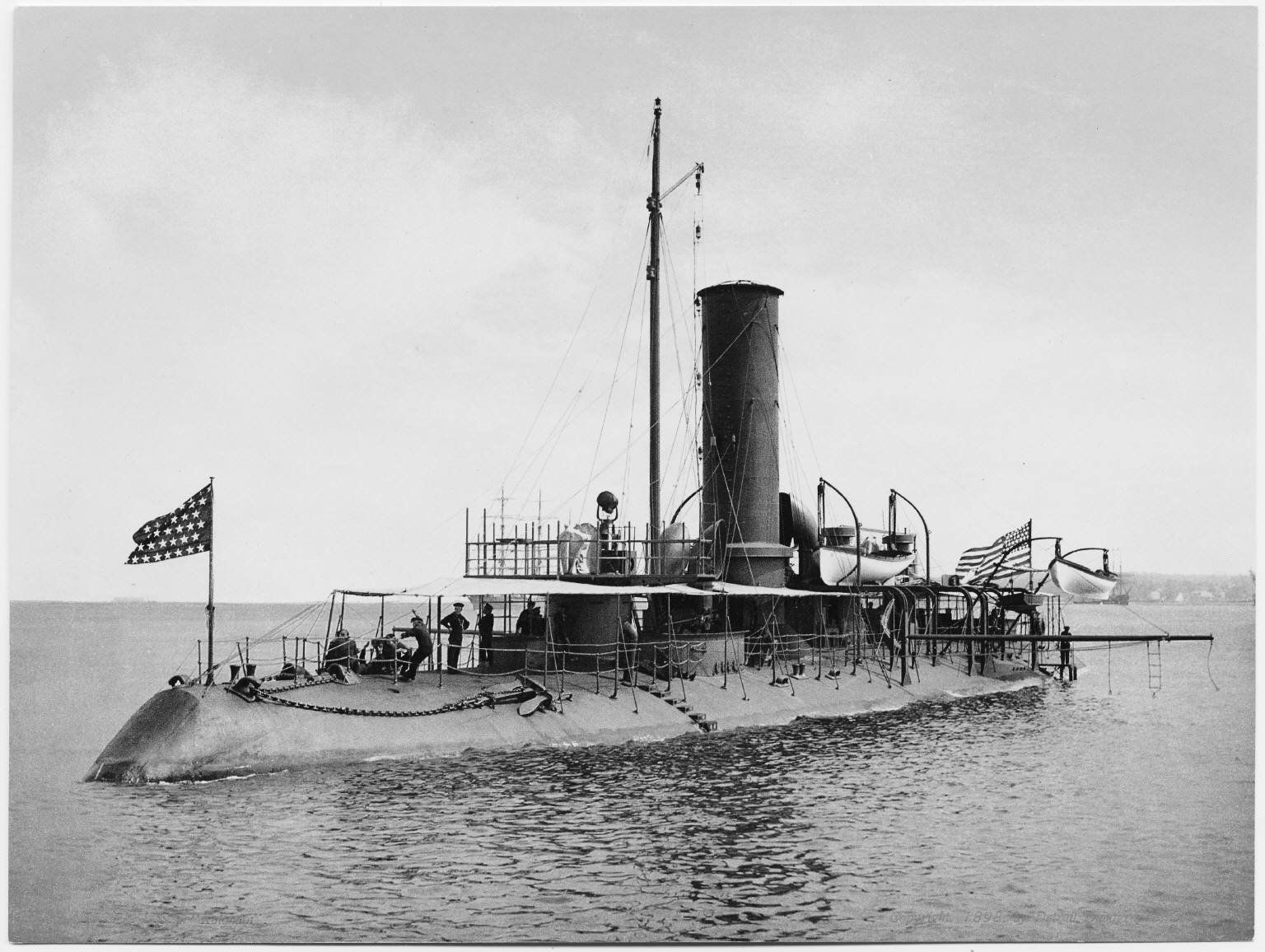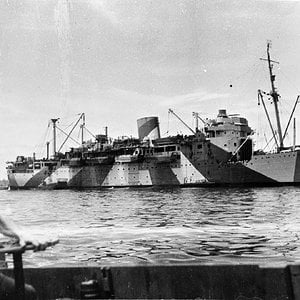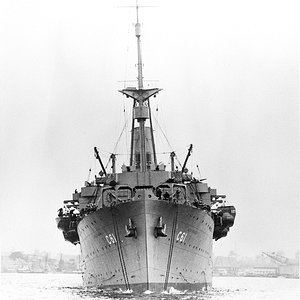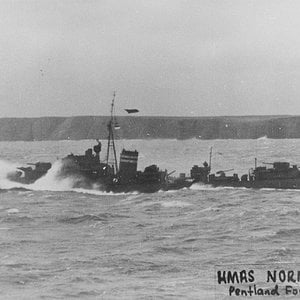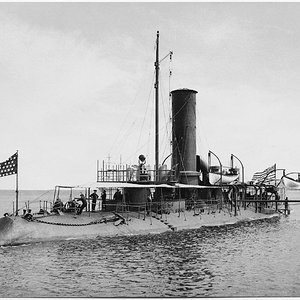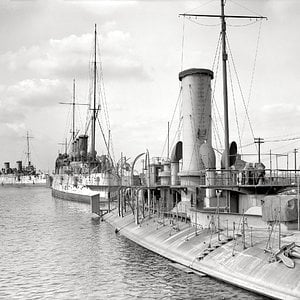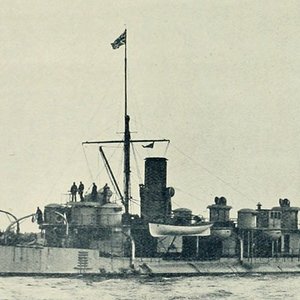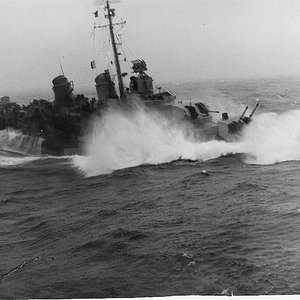Navigation
Install the app
How to install the app on iOS
Follow along with the video below to see how to install our site as a web app on your home screen.
Note: This feature may not be available in some browsers.
More options
You are using an out of date browser. It may not display this or other websites correctly.
You should upgrade or use an alternative browser.
You should upgrade or use an alternative browser.
USS Katahdin (1893)
USS Katahdin, an ironclad harbor-defense ram of innovative design, was the second ship of the United States Navy to be named for Mount Katahdin, a mountain peak in Maine.
The inspiration behind Katahdin was Rear Admiral Daniel Ammen, an advocate of a coast defense navy. Ammen was impressed by the British torpedo ram HMS Polyphemus. Unlike Polyphemus, which was primarily a torpedo boat, with ramming a a secondary function, the American design was for a pure ram, with no torpedos carried.
Katahdin's design was a new departure in naval architecture, built to ride extremely low in the water with her bow awash while under way. Her hull embodied several new features later used in early submarines.
An order was placed for construction of a prototype armored ram in 1889. Her keel was laid down by the Bath Iron Works of Bath, Maine in July 1891. She was launched on 4 February, 1893, sponsored by Miss Una Soley, daughter of James R. Soley, the Assistant Secretary of the Navy, and commissioned at the New York Navy Yard on 20 February 1897 with Commander Richard P. Leary in command
Although Katahdin's engines were more powerful than specified, Katahdin failed to reach the contracted speed of 17 knots (31 km/h; 20 mph), requiring the passing of special legislation to allow her to be accepted by the Navy. Conditions aboard the ship were extremely uncormfortable, as it was cramped and had very poor ventilation, leading to almost intolerable tempertures being recorded.
Katahdin departed New York Harbor 4th March 1897, the day of President William McKinley's first inauguration, and sailed to Norfolk, Virginia, before decommissioning at Philadelphia Naval Yard on 17 April. A year later, with the Navy preparing for an impending war with Spain, she recommissioned there 10 March 1898. She was attached to the North Atlantic Squadron and operated along the Atlantic Coast from New England to Norfolk protecting the nation's seaboard cities from possible attack. After decisive American naval victories at Manila Bay and Santiago Harbor eliminated this threat, the ram decommissioned for the last time at Philadelphia Navy Yard on 8 October.
Katahdin was stricken from the Naval Vessel Register on 9 July 1909 and designated "Ballistic Experimental Target 'A'". Katahdin was sunk by gunfire at Rappahannock Spit, Virginia, that September
Name: USS Katahdin
Builder: Bath Iron Works, Bath, Maine
Launched: 4 February 1893
Commissioned: 20 February 1896
Decommissioned: 8 October 1898
Struck: 9 July 1909
Fate: Sunk as target, September 1909
General characteristics [1]
Type: Ironclad ram
Displacement: 2,155 long tons (2,190 t)
2,383 long tons (2,421 t) full load
Length: 250 ft 9 in (76.43 m)
Beam: 43 ft 5 in (13.23 m)
Draft: 15 ft 1 in (4.60 m) (mean)
Propulsion: 2 shaft horizonal triple expansion steam engines
Speed: 16 knots (30 km/h; 18 mph)
Complement: 97
Armament: 4 × 6-pounder rifled guns
Armor: Harvey and Nickel steel
Sides: 6–3 in (150–76 mm)
Deck:6–2 in (150–51 mm)
Uptakes: 6 in (150 mm)
Conning tower:18 in (460 mm
USS Katahdin, an ironclad harbor-defense ram of innovative design, was the second ship of the United States Navy to be named for Mount Katahdin, a mountain peak in Maine.
The inspiration behind Katahdin was Rear Admiral Daniel Ammen, an advocate of a coast defense navy. Ammen was impressed by the British torpedo ram HMS Polyphemus. Unlike Polyphemus, which was primarily a torpedo boat, with ramming a a secondary function, the American design was for a pure ram, with no torpedos carried.
Katahdin's design was a new departure in naval architecture, built to ride extremely low in the water with her bow awash while under way. Her hull embodied several new features later used in early submarines.
An order was placed for construction of a prototype armored ram in 1889. Her keel was laid down by the Bath Iron Works of Bath, Maine in July 1891. She was launched on 4 February, 1893, sponsored by Miss Una Soley, daughter of James R. Soley, the Assistant Secretary of the Navy, and commissioned at the New York Navy Yard on 20 February 1897 with Commander Richard P. Leary in command
Although Katahdin's engines were more powerful than specified, Katahdin failed to reach the contracted speed of 17 knots (31 km/h; 20 mph), requiring the passing of special legislation to allow her to be accepted by the Navy. Conditions aboard the ship were extremely uncormfortable, as it was cramped and had very poor ventilation, leading to almost intolerable tempertures being recorded.
Katahdin departed New York Harbor 4th March 1897, the day of President William McKinley's first inauguration, and sailed to Norfolk, Virginia, before decommissioning at Philadelphia Naval Yard on 17 April. A year later, with the Navy preparing for an impending war with Spain, she recommissioned there 10 March 1898. She was attached to the North Atlantic Squadron and operated along the Atlantic Coast from New England to Norfolk protecting the nation's seaboard cities from possible attack. After decisive American naval victories at Manila Bay and Santiago Harbor eliminated this threat, the ram decommissioned for the last time at Philadelphia Navy Yard on 8 October.
Katahdin was stricken from the Naval Vessel Register on 9 July 1909 and designated "Ballistic Experimental Target 'A'". Katahdin was sunk by gunfire at Rappahannock Spit, Virginia, that September
Name: USS Katahdin
Builder: Bath Iron Works, Bath, Maine
Launched: 4 February 1893
Commissioned: 20 February 1896
Decommissioned: 8 October 1898
Struck: 9 July 1909
Fate: Sunk as target, September 1909
General characteristics [1]
Type: Ironclad ram
Displacement: 2,155 long tons (2,190 t)
2,383 long tons (2,421 t) full load
Length: 250 ft 9 in (76.43 m)
Beam: 43 ft 5 in (13.23 m)
Draft: 15 ft 1 in (4.60 m) (mean)
Propulsion: 2 shaft horizonal triple expansion steam engines
Speed: 16 knots (30 km/h; 18 mph)
Complement: 97
Armament: 4 × 6-pounder rifled guns
Armor: Harvey and Nickel steel
Sides: 6–3 in (150–76 mm)
Deck:6–2 in (150–51 mm)
Uptakes: 6 in (150 mm)
Conning tower:18 in (460 mm

